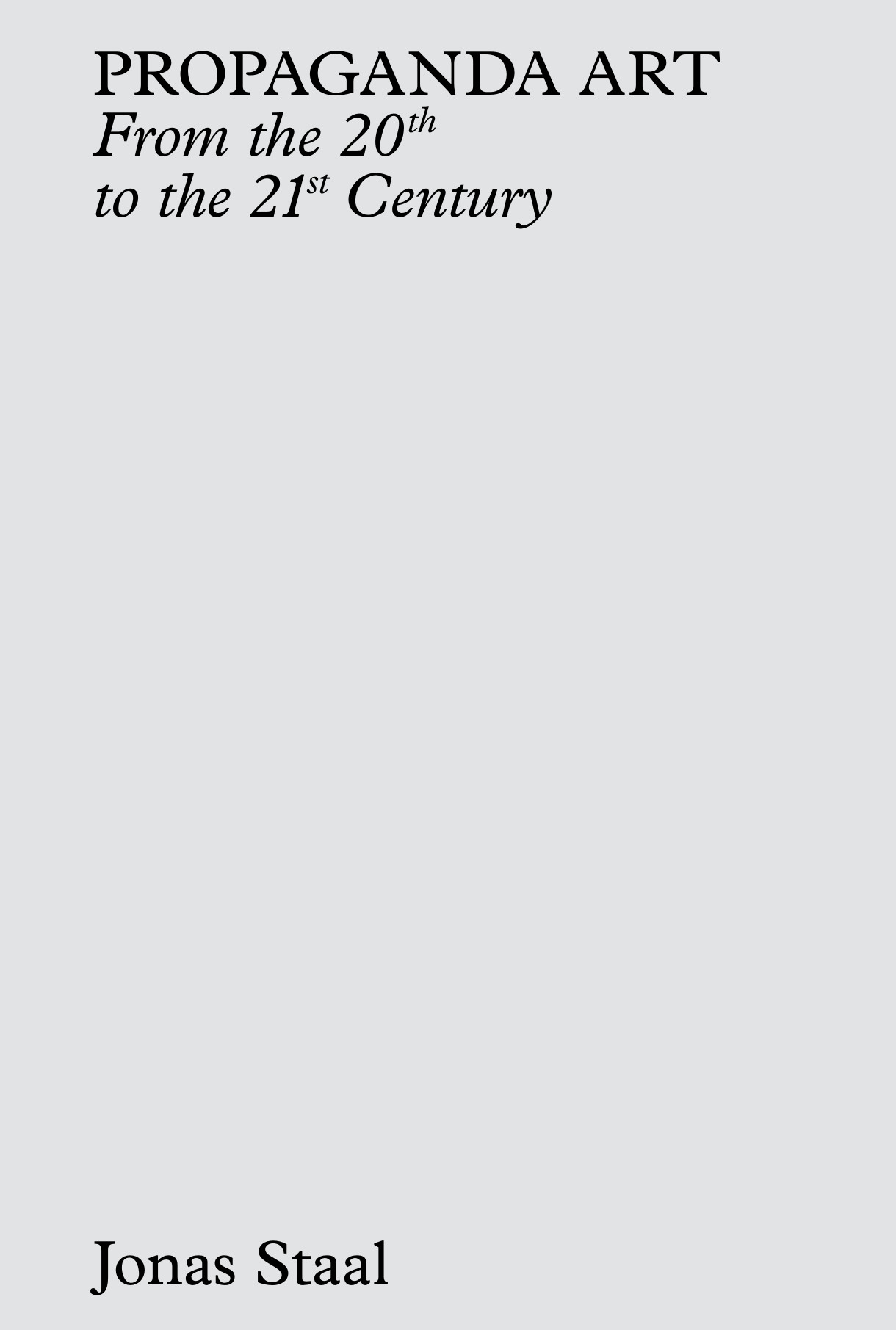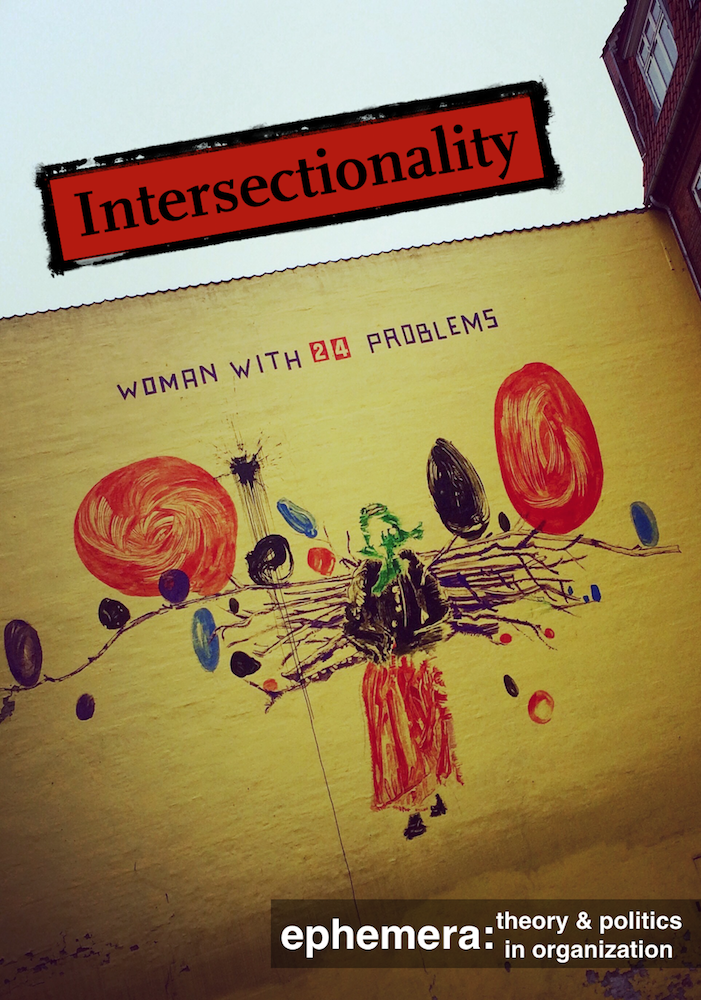Jonas Staal: Propaganda Art from the 20th to the 21st Century (2018)
Filed under book, thesis | Tags: · art history, artistic research, avant-garde, democracy, modernism, performance, politics, power, propaganda, totalitarianism, war on terror

“This study by artist Jonas Staal explores the development of propaganda art from the 20th to the 21st century. Staal defines propaganda as the performance of power by means of the equation propaganda = power + performance. Through his work as a propaganda researcher and practice as a propaganda artist, he argues that different structures of power generate different forms of propaganda and therefore different forms of propaganda art. Whereas in the context of the 20th century Staal discusses the differences between avant-garde, totalitarian, and modernist propaganda art, in the 21st century he proposes the categories of War on Terror Propaganda Art, Popular Propaganda Art, and Stateless Propaganda Art. By means of concrete examples of artists and artworks within each of these categories, he attempts to show how the performance of power in the 21st century translates into different visual forms, and how they shape and direct our reality. Staal’s study shows that power and art exist in continuous interaction. Propaganda and propaganda art are not terms that only refer to the past, but concepts and practices through which we can understand the construction of reality in the present.”
PhD Dissertation, Faculty of Humanities, University of Leiden
Open access
425 pages
PDF, PDF (2 MB)
Video (12 min)
D. Fox Harrell: Phantasmal Media: An Approach to Imagination, Computation, and Expression (2013)
Filed under book | Tags: · agency, artificial intelligence, cognition, computation, computing, epistemology, ethnicity, imagination, interface, meaning, media, metaphor, narrative, new media art, poetics, power, race, self, semiotics, subjectivity, technology, theory, video games

“An argument that great expressive power of computational media arises from the construction of phantasms—blends of cultural ideas and sensory imagination.
In Phantasmal Media, D. Fox Harrell considers the expressive power of computational media. He argues, forcefully and persuasively, that the great expressive potential of computational media comes from the ability to construct and reveal phantasms—blends of cultural ideas and sensory imagination. These ubiquitous and often-unseen phantasms—cognitive phenomena that include sense of self, metaphors, social categories, narrative, and poetic thinking—influence almost all our everyday experiences. Harrell offers an approach for understanding and designing computational systems that have the power to evoke these phantasms, paying special attention to the exposure of oppressive phantasms and the creation of empowering ones. He argues for the importance of cultural content, diverse worldviews, and social values in computing. The expressive power of phantasms is not purely aesthetic, he contends; phantasmal media can express and construct the types of meaning central to the human condition.
Harrell discusses, among other topics, the phantasm as an orienting perspective for developers; expressive epistemologies, or data structures based on subjective human worldviews; morphic semiotics (building on the computer scientist Joseph Goguen’s theory of algebraic semiotics); cultural phantasms that influence consensus and reveal other perspectives; computing systems based on cultural models; interaction and expression; and the ways that real-world information is mapped onto, and instantiated by, computational data structures.
The concept of phantasmal media, Harrell argues, offers new possibilities for using the computer to understand and improve the human condition through the human capacity to imagine.”
Publisher MIT Press, 2013
ISBN 9780262019330, 0262019337
xix+420 pages
Reviews: John Harwood (Artforum, 2014), Brian Reffin Smith (Leonardo, 2015).
Comment (0)Ephemera, 18(1): Intersectionality (2018)
Filed under journal | Tags: · feminism, intersectionality, metoo, power, race

“The continued interest in intersectionality can be seen as a positive sign that feminist-inspired scholarship still has something significant to offer, and that its political dimension lives on. In management and organization studies, Intersectionality has been seized either as a theoretical lens or methodological approach in a number of literature strands, in both conceptual and empirical work. Yet, it would be too hasty to conclude that intersectionality is the answer to all ills, or the panacea that can replace the use of the ‘f-word’ altogether. This special issue addresses a number of tensions and contention points in intersectionality research. We formulate them as follows: i. a tension between seeing intersectionality as a bounded vs. polymorphous concept; ii. a tension between intersections as stable vs. fluid; iii. a tension between intersectional thinking as a tool to apprehend embodied experiences vs. as a possible limitation to a universal democratic and emancipatory project. The aim of our special issue is thus not to take sides in these ongoing discussions, but rather to see what intersectionality can ‘do’ for organization studies at large. Authors in this special issue address, at times passionately, one or the other side of these arguments.”
Edited by Florence Villesèche, Sara Louise Muhr, and Martyna Śliwa
Publisher Ephemera collective, with MayFlyBooks, Feb 2018
Creative Commons Attribution-Noncommercial-No Derivative Works 3.0 Unported License
ISBN 9781906948405
227 pages

